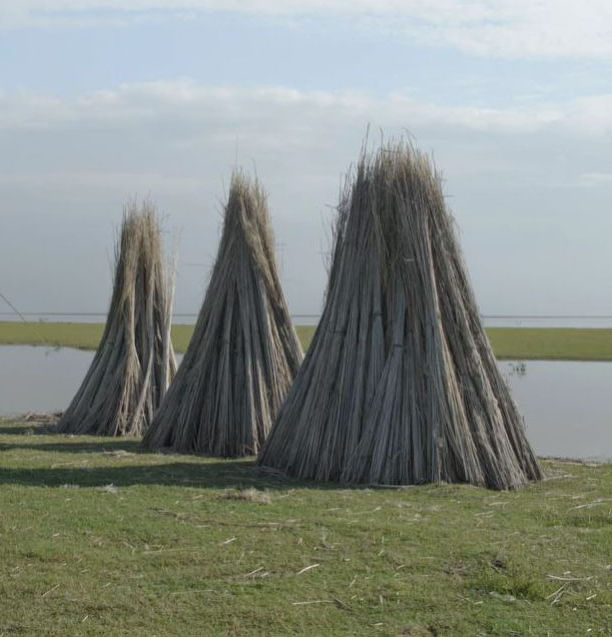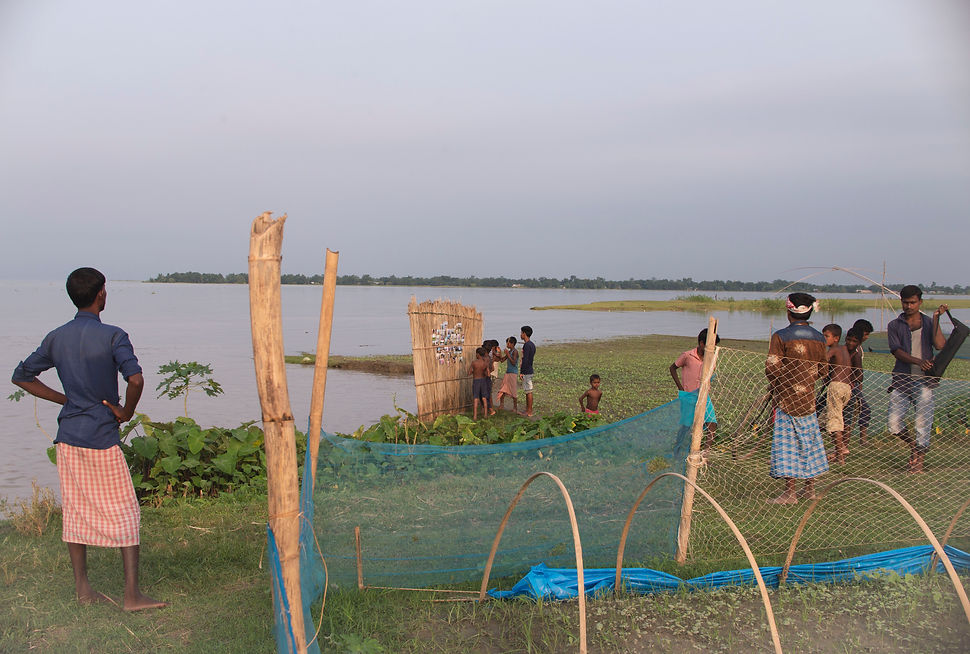
Devadeep Gupta
Absent River

Credits
Collaborators: Badarruddin Ali, Babu Chowdhury, Suku Begum, Fakaruddin Ahmed, and more members of Baladmari Char 1 Village, Goalpara
Research Assistant - Hrishikesh Chowdhury, Badaruddin Ali
Baladmari Char is a riparian neighborhood in Goalpara, Assam, precariously stretched along the banks of the Brahmaputra. While most of the urban river-banks of Goalpara have been systematically concretized using retaining walls and sand-bags as flood aversion measures, the banks of Baladmari lay bare to the river, as the villagers keep inching inwards from the bank following the line of erosion every monsoon.
The proximity of the land to the river in a way works wonders for the agrarian attitude of the community, with the land being lush and bountiful due to the constant watering and rich deposition from the river. Every year post monsoon, after the flooding of the lands have receded leaving behind bruised and tattered marks on crumbly walls, the fresh, fertile silt settles on the farm lands. The rejuvenated soil facilitates the growth of jute plants among others in hordes all along the riverbank, dotting the landscape of the village with the overgrown lanky plants.
The villagers harvest the skin of the plant to be used as fiber or rope, and the tensile trunk of the grass is used as a building material for crafting a myriad of things ranging from toys to furniture to roofs and walls. Heaps of drying parts of the plants appear as temporal, fragile sculptures scattered across the open fields. The aura of the village is aestheticized by these vernacular shapes created out of function, reflecting the inspiration contextual to the site.














The idea to create a wall presented itself directly out of the circumstantial influences in the site. The surrounding shapes of the land added to the inspiration, reflecting themselves in the form and material of the intervention.
Undoubtedly, most of the wall is washed away within few hours. A section which remains is morphed into a temporal exhibition space of photographs made around the site during the process of wall-making.
